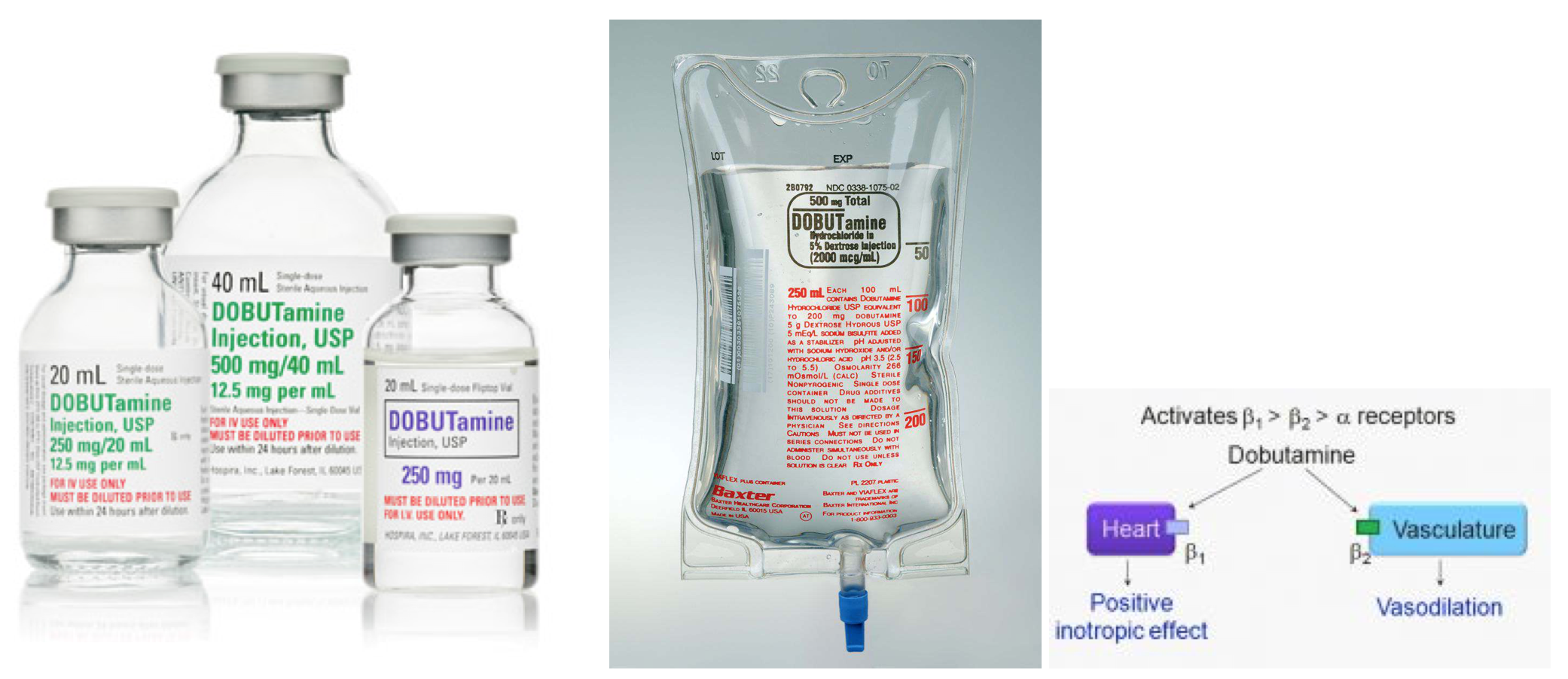Dobutamine (Dobutrex)

General:
- Dobutamine is a synthetic catecholamine with beta-1, beta-2 and ?1 effects
- Dose: 2 to 20 mcg/kg/min
- Caution for arrhythmias
Pharmacologic Category
- Therapeutic: inotropics, vasopressors
- Pharmacologic: alpha and beta agonist
Actions:
- Direct beta-1 agonist, with limited beta-2 and alpha-1 effects
- Heart: increases inotropy via both beta-1 and alpha-1, but HR is increased only by the beta-1 effect.
- Blood vessels: predominantly a vasodilator drug
- beta-2-mediated vasodilation that is only partially counteracted by (-) dobutamine's alpha-1 constrictor effects
- (+) dobutamine enantiomer and its metabolite, (+)-3-O-methyldobutamine, are alpha-1 antagonists. Thus, as dobutamine is metabolized, any alpha--agonist actions of the drug could diminish over time.
Advantages:
- At low doses generally less tachycardia than with equivalent doses of isoproterenol or dopamine.
- Afterload reduction (SVR and PVR) may improve LV and RV systolic function in patients with heart failure
- Renal blood flow may increase (due to a beta-2 effect), but not as much as with comparable (but low) doses of dopamine.
Disadvantages:
- Dose related tachycardia and arrhythmias
- Hypotension may occur if the reduction in SVR is not fully offset by an increase in CO; dobutamine is an inotrope but is not a pressor.
- Coronary steal similar to that occurring with isoproterenol is possible, leading to ischemia.
- Nonselective vasodilator so blood flow may be shunted from kidney and splanchnic bed to skeletal muscle.
- Tachyphylaxis has been reported when infused for more 72 hours.
- Mild hypokalemia may occur.
- As a partial agonist, dobutamine can inhibit actions of full agonists (e.g., epinephrine) under certain circumstances.
Indications
- Low CO states (cardiogenic shock), especially with increased SVR or PVR.
Dosage:
- Dobutamine dose: 2 to 20 mcg/kg/min
Review
In this song, I use basketball players as a metaphor for vasopressors and inotropes used in critical care medicine. Their jersey numbers reflect their maximum dose. Their position reflects how they should be administered, central vs. peripheral. The song is filled with many homonyms, so that each time you listen you may discover something new. On the right side of the screen, I reveal these meanings as the song progresses

Discussion
What to join the discussion? Sign-up here!
The are currently no comments
